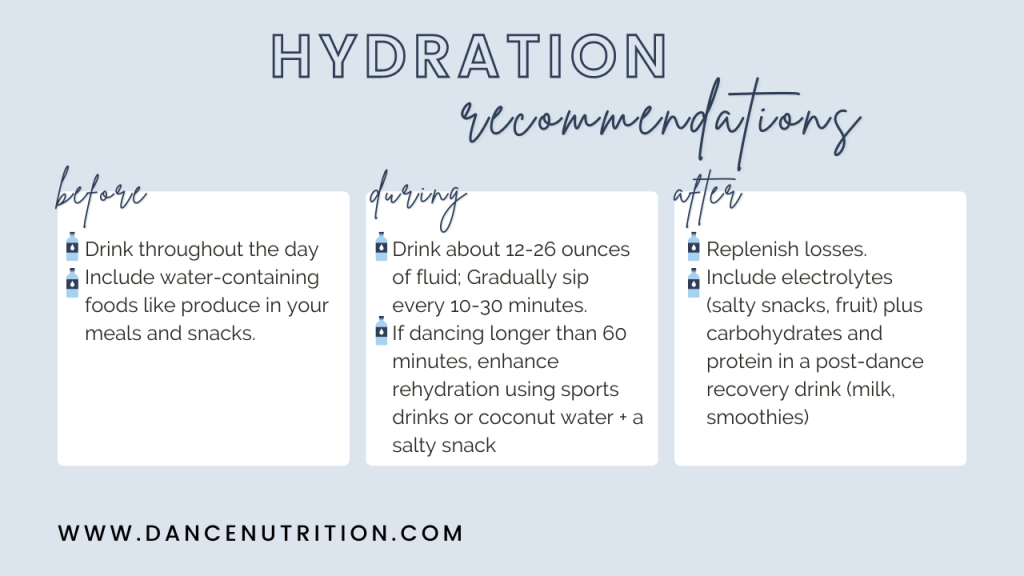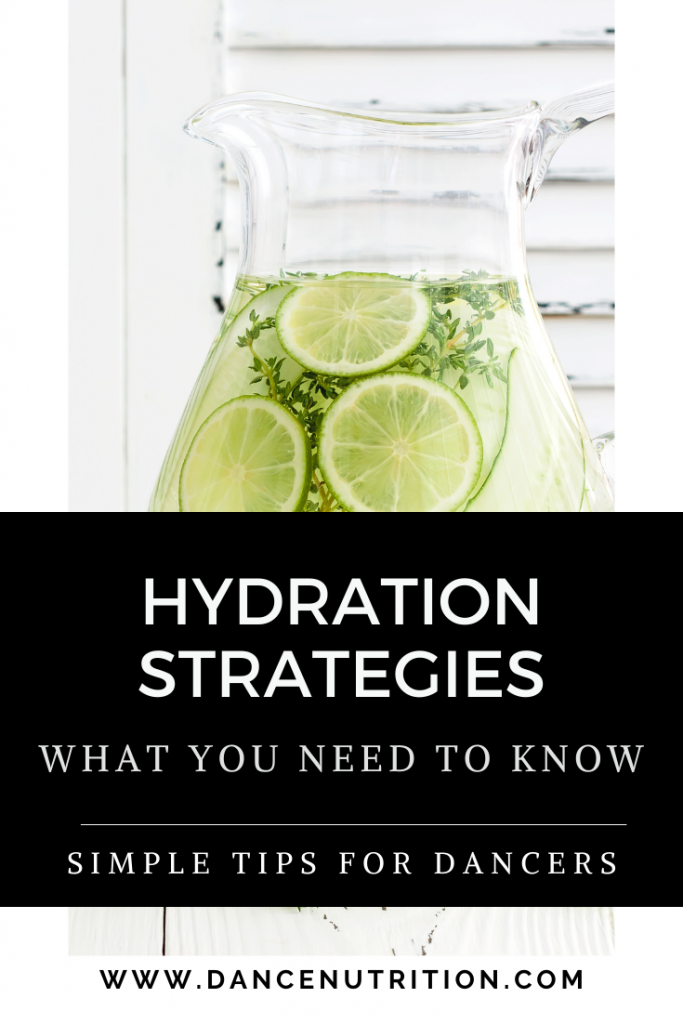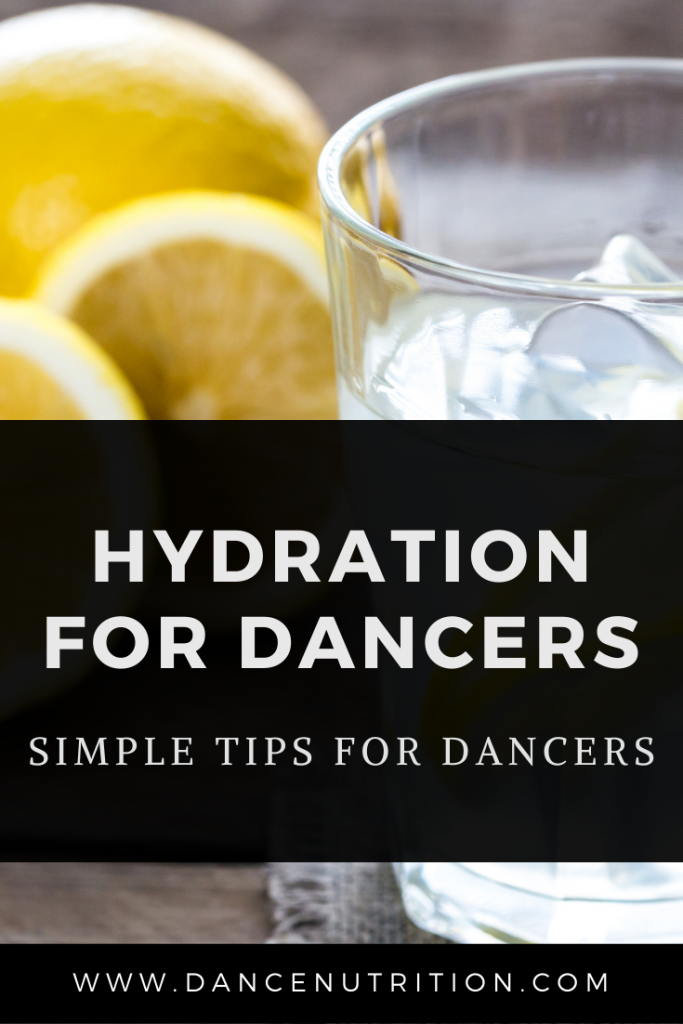Water makes up around 60% of the human body. Beyond basic health, hydration supports metabolic homeostasis by helping to digest, transport, and absorb nutrients while aiding in the removal of waste. And for dancers specifically, fluid balance can even impact flexibility, stamina, and focus. Needless to say, proper hydration is essential for performance, recovery, and injury prevention.
In this post, we’ll dive into everything dancers need to know about staying hydrated, without the obsession. You’ll learn how to assess your hydration needs, what to drink (and when), and practical tips to fuel your performance throughout dance classes, rehearsals, and intensives.
Why Hydration Matters for Dancers
Dehydration, even mild, can negatively impact a dancer’s energy, mental focus, and endurance. This becomes especially important during summer intensives or long rehearsal days.
Common symptoms of dehydration in dancers:
- Difficulty concentrating
- Impaired focus or fogginess
- Increased risk of overheating
- Muscle cramps or spasms
- Early onset of fatigue and soreness
Unlike the general population, dancers often face additional challenges: fast-paced schedules, limited water breaks, body image pressures, fear of bloating or digestive sloshing, and a higher risk of disordered eating. That’s why a flexible, dancer-specific approach to hydration is crucial— one that supports performance without relying on restrictive guidelines.
What Affects a Dancer’s Hydration Status?
#1: Thirst is unreliable
Our thirst mechanism doesn’t kick in until we’re already mildly dehydrated. In the context of long rehearsals or back-to-back classes, it’s easy to ignore or suppress thirst cues, especially when access to fluids is limited.
#2: Protein intake can increase fluid needs
High-protein diets may increase the body’s need for water due to increased urea production, a byproduct of protein metabolism. Despite high-protein diets previously thought to increase the risk of dehydration, evidence does not support this in healthy individuals who drink enough fluid each day (at least 3 liters for those 14 and older). Dancers, however, need to consider their unique circumstances and challenges to hydrating regularly.
#3: Sweat losses vary widely.
Some dancers sweat more than others, and environmental factors like heat and humidity can drastically increase fluid needs— especially during summer intensives.
How to Check Your Hydration Status: Pee Test 101
One simple (but imperfect) way to monitor hydration is by observing your urine color and volume. The darker your urine and the smaller in volume, the more you’ll want to hydrate.
- Pale yellow: You’re likely well-hydrated.
- Dark yellow, small volume: You likely need to rehydrate.
Use with caution: Certain medications and supplements (like B12) can alter urine color, making this test less accurate. Here’s a quick self-assessment to check your hydration status:

Hydration Guidelines for Dancers: A Practical Approach
The American College of Sports Medicine recommends that athletes hydrate before, during, and after exercise. While these general guidelines offer a helpful starting point, dancers benefit most from a planned and flexible approach, especially if dancing for 90+ minutes per day or in hot climates. Let’s dive into the guidelines:
Hydrate Before Dance:
- In the 2–4 hours prior, sip fluids to thirst.
- Don’t over-hydrate; you’ll end up making frequent bathroom trips.
- Aim for pale yellow urine as your guide.
- Roughly 1–2.5 cups (8–20 oz) is sufficient, depending on conditions (the higher end is more suited during the hot summer months when higher sweat rates are likely).
Hydrate During Dance:
- Sip 12–26 oz of fluid across longer classes or rehearsals.
- Drink every 10–30 minutes, especially if dancing intensely or sweating heavily.
- If dancing longer than 60 minutes, add sodium and simple carbs (like from a sports drink).
Sodium is the leading electrolyte lost in sweat. Sodium enhances fluid absorption and retention. Carbohydrates boost energy and help with cellular hydration (think: carbo-HYDRATE = HYDRATE). A quick tip: cramping is a sign that your body needs electrolyte and carbohydrate replenishment!
While some levels of electrolytes and carbohydrates enhance your body’s ability to hydrate, adding too much can hinder it. There’s a delicate balance between not enough and too much. Sports drinks like Gatorade or Propel contain a specific concentration and variety of sugar (6-8% carbohydrate: glucose and fructose). This unique combination enhances hydration. Coconut water is high in another key electrolyte: potassium. However, as a rehydration fluid, coconut water is limited. To optimize this choice, pair your coconut water with salted pretzels for a boost in both sodium and quick-acting carbohydrates.
Hydrate After Dance:
Plain water is refreshing, but optimizing your window of recovery is encouraged within the hour after dancing. This is especially true for dancers with higher rates of sweating. Here’s how:
- Aim to replace lost fluids: about 1.25–1.5 liters (~5–6 cups).
- Combine fluids with sodium, carbohydrates, and protein to optimize recovery.
- Chocolate milk is an excellent recovery drink, providing hydration, electrolytes, carbs, and protein all in one. It’s also cost-effective when compared to other options.
How Much Water Do Dancers Need?
A general goal is 3–3.5 liters per day (12–15 cups), though this varies by body size, sweat rate, and activity level. As a bonus, include hydrating foods as part of your meal plan. Fruits, vegetables, smoothies, juices, tea, and even coffee contribute to your total intake. Just be mindful that excess caffeine can act as a diuretic (increasing urinary fluid losses), so don’t let it replace fueling opportunities.

Top 12 Tips to Stay Hydrated as a Dancer
- Use a reusable water bottle (at least 24 oz) and aim to refill it 3–4 times daily.
- Begin dance sessions hydrated, not overly full of fluid. Drinking excessively can cause discomfort and frequent urination.
- Sip throughout class, rehearsal, and post-dance recovery.
- Spread your fluid intake throughout the day.
- Eat water-rich produce like cucumbers, lettuce, tomatoes, and berries.
- Use sports drinks for long, sweaty sessions.
- Pair coconut water with salty snacks like pretzels.
- Avoid excessive artificial sweeteners and sugar alcohols (ie. sorbitol, xylitol, and maltitol) commonly found in “diet” or “sugar-free” drinks, which can cause GI distress.
- Monitor urine color (but don’t obsess). Dark yellow urine is a sign of needing more to drink.
- Choose non-carbonated drinks for hydration.
- Plan ahead for long dance days or intensives.
- Try rehydration therapy for prolonged dancing (more on that here).
- Make your own sports drink: juice your favorite citrus fruit (like 2-3 oranges) and mix with fresh lemon juice (about half a cup). Add 1 cup of coconut water, a pinch of sea salt, and 2 teaspoons of sugar (or honey). Proportions will vary depending on your taste preferences.
Final Thoughts: Hydration Without Obsession
Staying hydrated doesn’t have to feel like a full-time job or a rigid checklist. Instead, think of hydration as part of your overall fueling strategy. Listen to your body, stay aware of your environment, and build hydration habits that work with your dance schedule, not against it.




